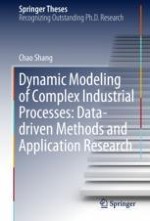This thesis develops a systematic, data-based dynamic modeling framework for industrial processes in keeping with the slowness principle. Using said framework as a point of departure, it then proposes novel strategies for dealing with control monitoring and quality prediction problems in industrial production contexts.
The thesis reveals the slowly varying nature of industrial production processes under feedback control, and integrates it with process data analytics to offer powerful prior knowledge that gives rise to statistical methods tailored to industrial data. It addresses several issues of immediate interest in industrial practice, including process monitoring, control performance assessment and diagnosis, monitoring system design, and product quality prediction. In particular, it proposes a holistic and pragmatic design framework for industrial monitoring systems, which delivers effective elimination of false alarms, as well as intelligent self-running by fully utilizing the information underlying the data. One of the strengths of this thesis is its integration of insights from statistics, machine learning, control theory and engineering to provide a new scheme for industrial process modeling in the era of big data.
